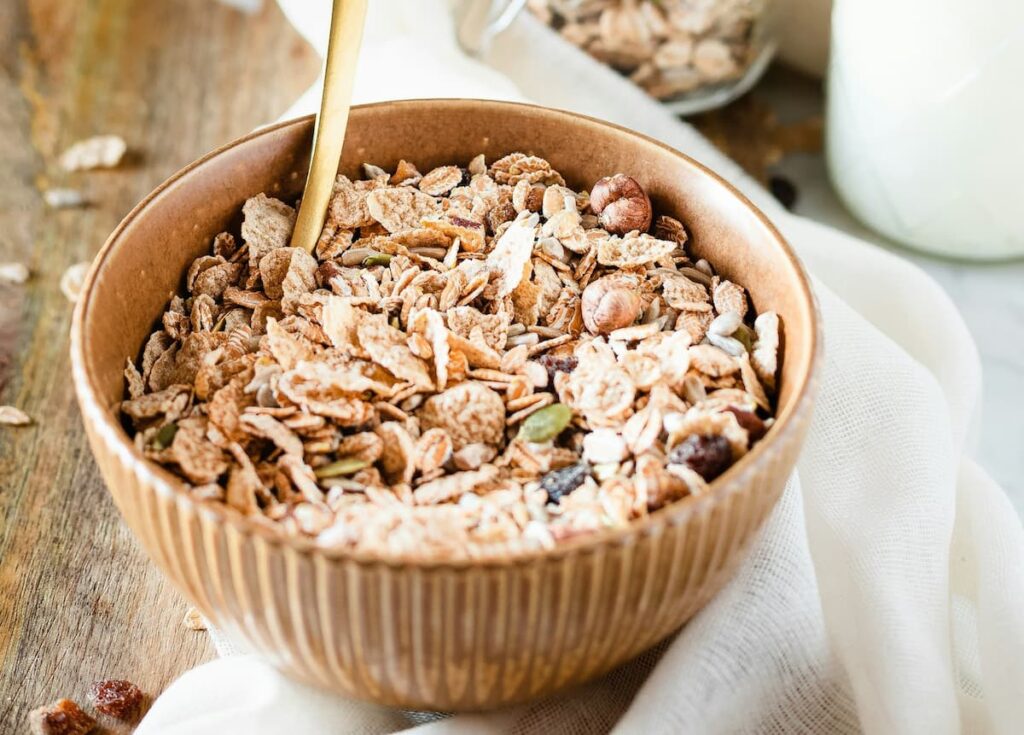Achieving a toned six-pack is a fitness goal that requires a combination of strategic exercise, nutrition, and consistent lifestyle habits. While there’s no magic shortcut, science shows that focusing on key actions can expedite the process.
If you want to build and reveal a defined abdominal region, these three methods are the most effective and scientifically supported ways to get there quickly.
1. Optimise Your Nutrition for Fat Loss and Muscle Definition
One of the most important factors in revealing a toned six-pack is lowering body fat percentage. Even if you have strong abdominal muscles, they won’t be visible unless the layer of fat covering them is reduced. Research shows that abs are “made in the kitchen,” meaning that what you eat plays a significant role in fat loss.
1.1 Adopt a Caloric Deficit Diet
The concept of energy balance governs fat loss. A caloric deficit occurs when you consume fewer calories than you burn. According to a study published in the American Journal of Clinical Nutrition, individuals who maintained a caloric deficit consistently lost body fat, including visceral and subcutaneous fat, which covers the abdominal muscles (Hall et al., 2016).
To calculate your ideal calorie intake, begin by determining your basal metabolic rate (BMR) using the Harris-Benedict Equation and adjust for physical activity. Consuming 10-20% fewer calories than your maintenance level will create a sustainable deficit that promotes fat loss without causing muscle breakdown.
1.2 Prioritise High-Protein Intake
When aiming to lose fat while preserving lean muscle mass, protein is crucial. Research from The Journal of Nutrition demonstrates that high-protein diets preserve lean body mass during caloric restriction and support muscle repair and growth (Pasiakos et al., 2013).
Aim for a protein intake of approximately 1.6 to 2.2 grams of protein per kilogram of body weight per day, especially when in a caloric deficit. Sources of lean protein like chicken, fish, eggs, and plant-based options like tofu and lentils are excellent choices to help promote muscle growth while reducing fat.
1.3 Focus on Whole Foods and Minimise Processed Sugars
Whole foods such as vegetables, fruits, whole grains, and lean proteins provide essential nutrients while being lower in calories compared to processed foods. Studies from The Lancet have shown that diets high in processed foods and refined sugars lead to increased fat accumulation, particularly around the abdomen (Hall et al., 2019).

Eliminating processed sugars and focusing on nutrient-dense foods will help keep your insulin levels stable, which reduces fat storage and enhances fat metabolism. When insulin spikes repeatedly from sugary or high-glycaemic index foods, the body prioritises fat storage over fat burning. Avoiding these foods accelerates your fat loss efforts, making your abs more visible.
2. Incorporate Core-Specific Exercises and Compound Movements
To build the muscles that give you a toned six-pack, targeted core exercises are essential. However, for optimal results, you should combine these with compound exercises that engage multiple muscle groups and create a higher calorie burn. Research shows that this hybrid approach leads to faster development of both core strength and overall fat reduction.
2.1 Focus on Compound Movements
Incorporating compound movements like squats, deadlifts, and overhead presses into your routine is vital. These exercises work multiple muscle groups at once, which not only increases calorie expenditure but also recruits the core muscles to stabilise the body. According to a study in The Journal of Strength and Conditioning Research, compound movements increase the activation of the rectus abdominis and oblique muscles, providing significant benefit for abdominal definition (Escamilla et al., 2016).
 Source: Bjorgvin Karl Gudmundsson
Source: Bjorgvin Karl GudmundssonBy engaging your core while performing these exercises, you stimulate more muscle growth, both in the abs and surrounding areas, promoting a more defined six-pack. Training with heavy loads and fewer repetitions (e.g., 6-10 reps) creates enough stimulus to promote muscle growth while keeping overall body fat low.
2.2 Add Core-Specific Workouts to Your Routine
While compound movements are highly effective, direct core exercises are also necessary for hypertrophy (muscle growth) in the abdominal region. Key exercises backed by science include the plank, bicycle crunch, and hanging leg raise. According to research published in The Journal of Sports Science and Medicine, the bicycle crunch and hanging leg raise produce the highest muscle activation in the upper and lower abs, respectively (Moraes et al., 2017).
To build muscle, aim to incorporate these exercises into your routine at least 3-4 times per week. Progressive overload is important for core exercises just as it is for other muscle groups. This can be achieved by increasing the number of repetitions, adding resistance (e.g., using a weighted vest), or increasing the difficulty of the exercise (e.g., moving from a basic plank to a one-arm plank).
2.3 Include HIIT (High-Intensity Interval Training) for Fat Burn
HIIT is a scientifically backed method to burn calories quickly and improve cardiovascular fitness. A study published in The Journal of Obesity found that subjects who engaged in HIIT lost significantly more fat than those who followed a moderate-intensity continuous training regimen (Boutcher, 2011). The intense bursts of activity in HIIT raise the heart rate and boost metabolism, leading to enhanced fat-burning even after the workout ends (the afterburn effect).

Incorporating HIIT into your weekly routine 2-3 times per week can help you burn more fat, making your six-pack more visible as your body fat percentage drops. Exercises like sprints, burpees, and jump squats work well in these workouts because they engage the core while simultaneously improving overall fitness and fat loss.
3. Optimise Recovery and Sleep to Maximise Muscle Growth and Fat Loss
Recovery is an often overlooked aspect of fitness, but it’s essential for achieving visible results quickly. Adequate sleep, active recovery, and stress management are all crucial for building muscle, burning fat, and ensuring overall hormonal balance.
3.1 Get 7-9 Hours of Quality Sleep
Numerous studies have shown a strong link between sleep and both muscle growth and fat loss. Research from the Annals of Internal Medicine reveals that individuals who slept fewer than seven hours per night experienced reduced fat loss and muscle retention compared to those who slept eight or more hours (Nedeltcheva et al., 2010). Sleep is when your body repairs muscle tissues and balances key fat-regulating hormones, such as ghrelin and leptin, which control hunger and satiety.
Sleep deprivation can also increase cortisol levels, a stress hormone that promotes fat storage, particularly in the abdominal region. Prioritising 7-9 hours of uninterrupted sleep per night will optimise your body’s ability to recover, build muscle, and burn fat.
3.2 Engage in Active Recovery and Stretching
Active recovery, such as light cardio, yoga, or dynamic stretching, helps flush out metabolic waste from muscles and prevent stiffness, ensuring that you can return to your workouts stronger and more flexible.
Research published in The Journal of Athletic Training shows that active recovery significantly enhances muscle performance and reduces delayed onset muscle soreness (Mizrahi et al., 2018). By improving circulation and promoting muscle repair, you’re able to train harder and more effectively, which speeds up the path to a visible six-pack.
3.3 Manage Stress to Prevent Cortisol-Induced Fat Gain
Chronic stress can have a detrimental impact on fat loss efforts, particularly around the abdomen. Cortisol, the body’s primary stress hormone, has been shown to promote fat storage in the abdominal region when elevated consistently (Epel et al., 2000). This makes stress management crucial for reducing fat and revealing a six-pack. Incorporating stress-reducing techniques such as mindfulness meditation, deep breathing exercises, or spending time outdoors can help regulate cortisol levels, enabling your body to prioritise fat burning.
Conclusion
Achieving a toned six-pack quickly requires a balanced approach focusing on fat loss, muscle growth, and recovery. Optimising your diet through a caloric deficit and high-protein intake, performing core-specific and compound exercises, and managing recovery through sleep and stress management are scientifically proven methods for success. By following these three strategies consistently, you’ll maximise your chances of getting a defined six-pack in the shortest time possible.
Key Takeaways Table
| Action | Summary |
|---|---|
| Optimise Nutrition | Maintain a caloric deficit, prioritise high-protein foods, and avoid processed sugars to reduce fat. |
| Core-Specific and Compound Exercises | Perform compound movements like squats and deadlifts along with targeted core exercises for maximum muscle activation. |
| HIIT Training | Incorporate HIIT workouts 2-3 times per week to burn fat quickly and enhance core visibility. |
| Prioritise Sleep and Recovery | Get 7-9 hours of sleep per night and engage in active recovery to support muscle growth and fat loss. |
| Manage Stress | Reduce cortisol levels through stress management techniques to prevent abdominal fat gain. |
Bibliography
Boutcher, S.H., 2011. High-intensity intermittent exercise and fat loss. Journal of Obesity, 2011, pp.1-10.
Escamilla, R.F., Francisco, A.C. and Fleisig, G.S., 2016. Muscle activation among supine, prone, and side planks with and without additional body weight. Journal of Strength and Conditioning Research, 30(9), pp.2461-2470.
Hall, K.D., Sacks, G. and Chandramohan, D., 2016. Quantification of the effect of energy imbalance on bodyweight. American Journal of Clinical Nutrition, 104(4), pp.1235-1244.
Hall, K.D., Ayuketah, A. and Brychta, R., 2019. Ultra-processed diets cause excess calorie intake and weight gain: an inpatient randomised controlled trial of ad libitum food intake. The Lancet, 394(10238), pp.569-579.
Mizrahi, S., Verbitsky, O. and Isakov, E., 2018. The effect of active recovery on muscle performance following muscle-damaging exercises in athletes. Journal of Athletic Training, 53(9), pp.846-851.
Moraes, A.C., Nemezio, K.M. and Junior, S.P., 2017. Core muscle activation during resistance exercise. Journal of Sports Science and Medicine, 16(3), pp.427-435.
Nedeltcheva, A.V., Kilkus, J.M. and Imperial, J., 2010. Sleep curtailment is accompanied by increased intake of calories from snacks and reduced fat oxidation. Annals of Internal Medicine, 153(7), pp.435-441.
Pasiakos, S.M., McLellan, T.M. and Lieberman, H.R., 2013. The effects of protein supplements on muscle mass, strength, and aerobic and anaerobic power in healthy adults: a systematic review. Journal of Nutrition, 143(11), pp.1756-1764.






